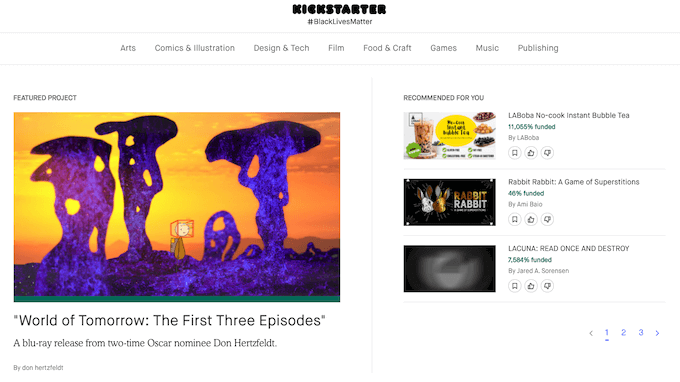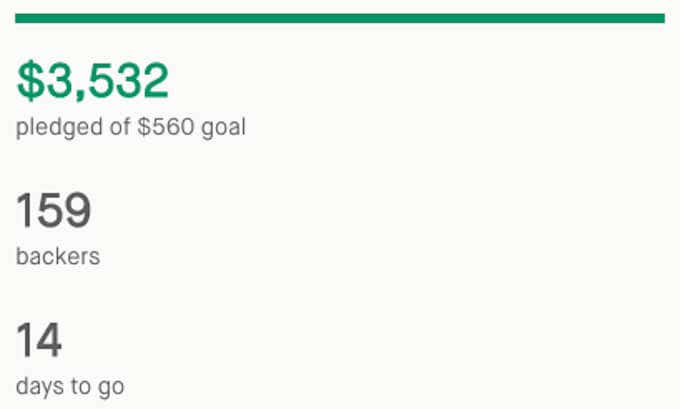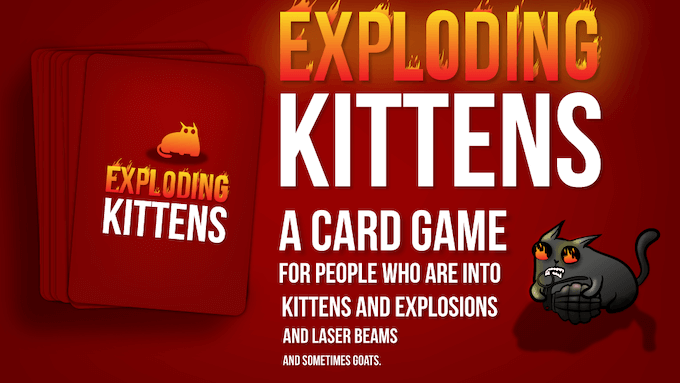If there’s a special project you want to start that you can’t fund entirely out of your own pocket, Kickstarter is a great place to go, but keep in mind that there are restrictions on how Kickstarter funding is awarded and the steps you have to take to get there. Read on to find out how to fund your project and give it the best chance of success.
What Is Kickstarter Funding?
The first thing to understand is that Kickstater is a crowdfunding platform. Individuals from every walk of life and every country around the world can pledge money to help make your dream a reality. When you create a project, you set a funding goal that must be reached for the Kickstarter to be considered a success.In most cases, you reward backers for their contribution. This reward often manifests as a discount on the product, special perks, and sometimes even including the name of the backer in the credits if the project allows that (like a video game.) However, funding is all-or-nothing.If you do not meet your funding goal, you receive none of the funds, and your backers are not charged. This ensures that you take the time to figure out the scope of the budget before launching the project. It also means backers can rest easy knowing creators can’t walk away with their money with no project to show for it.
Are There Fees?
Kickstarter doesn’t charge any fees unless the project is successfully funded. Kickstarter takes a 5% fee from the total funding amount, while Stripe (the payment processor for the platform) will take a processing fee that ranges from 3% to 5%. The good news is that no fees are charged if the project doesn’t reach its funding goal, so you have nothing to lose. That said, you can lose up to 10% of your total funded amount in fees, so bear that in mind. Even a small project with a Kickstarter funding goal of just $3000 might yield only $2700 after the fees are removed.
How to Be Successful on Kickstarter
Kickstarter is just as much about timing as it is about how well you tell a story. If you can propose a new product at a time when the market is clamoring for it, people will be more than happy to help fund its creation.On the other hand, if the project is something with a far more niche audience–for instance, if you’re a writer trying to fund an audiobook–then you will need to take extra steps and not rely on the general public. In situations like this, most of the funding will come from your fans. If you don’t have fans, then you’ll have to use the same method entrepreneurs have used for years when seeking venture capital and funding.
Tell a Compelling Story
People respond to stories. That’s why televisions and movies so strongly capture the attention of people: it’s in the genetic makeup of humans to enjoy a powerful narrative. When you seek funding for a Kickstarter project, the story of your project must be equally as compelling.People connect better through video than text. Put together a video, somewhere between two and six minutes long. Tell the story of your project. Take the time to write out the story and rehearse the video. This part is important, and something you want to try to do in a single take. Explain the motivation behind the product. What inspired you to create it? What cause are you championing? Explain who you are and why your idea will make the world a better place. Remember the concept of the hook. The first 30 seconds of your video has to capture the viewer’s attention so they will watch for the rest of the time.
Reach Out and Network
If the story behind your product isn’t compelling enough (or you don’t think you can present it that way), then you will need to build a strong network of individuals that will be motivated to contribute to your project. Think about people that might be interested in what you’re creating. Reach out and start a conversation with these individuals, but remember that they are people–they aren’t just wallets. If you happen to know an influencer that would be willing to help you out, all the better.
Offer Enticing Rewards
If someone is remotely interested in your project, a great reward can be all the motivation they need to contribute. After all, if the project is funded, it becomes available to them–and they get something unique in return. The rewards should reflect the project. If you’re creating a new product, offer backers a discount if they contribute. Each successive reward tier should offer the previous rewards on top of something else new. For example, if you are Kickstarting a short film, you could list all backers’ names in the credit, but those that contribute a significant amount toward your Kickstarter funding might receive an invitation to come to the studio or even be extras in the background. The more creative the reward, the more likely someone will contribute, even if they are just curious about the end result. Kickstarter provides a list of 96 potential reward ideas to help get those creative gears turning, but feel free to come up with your own rewards. Just make sure you can actually supply them. Gone are the days when the only way to create a new product was through venture capital funding from angel investors or by taking out a loan. Crowdfunding is a powerful tool, and Kickstarter is one of the best, low-risk ways to make a dream a reality. If you need ideas, take a look at successful Kickstarter projects of the past to help you figure out how to copy their success.




